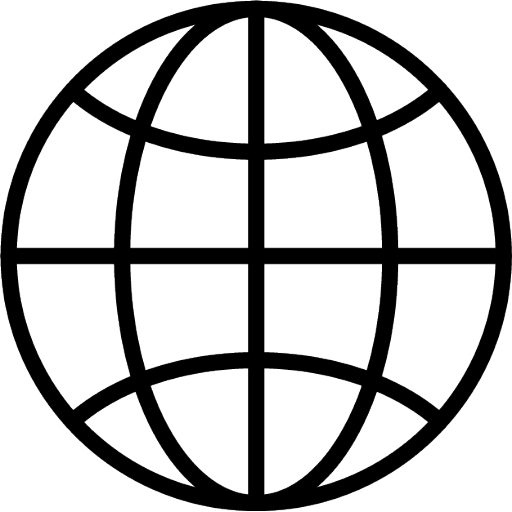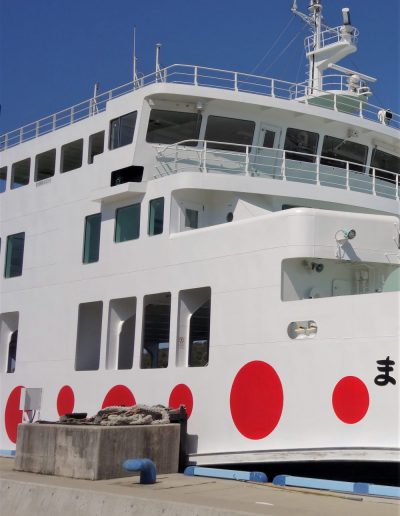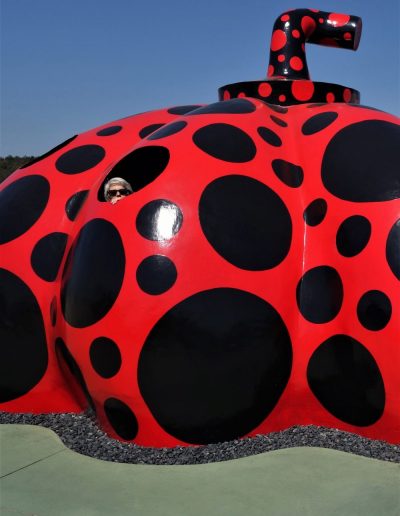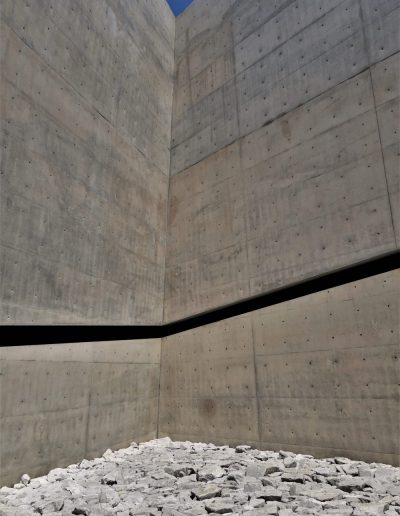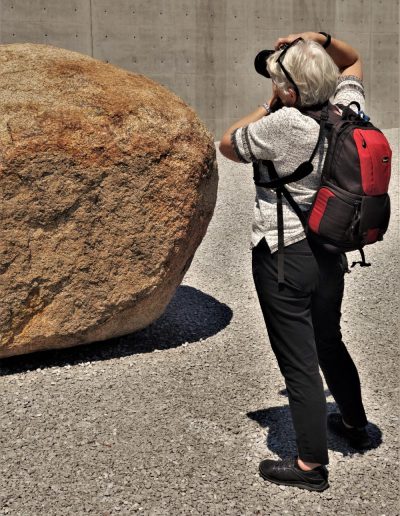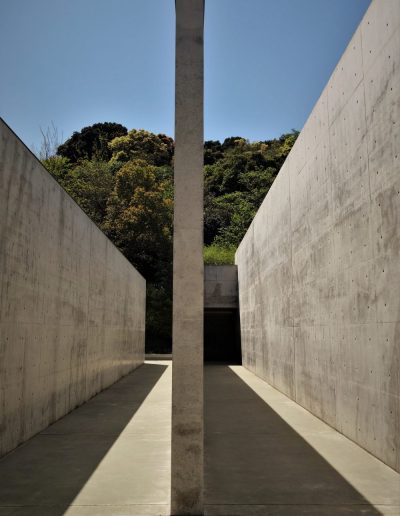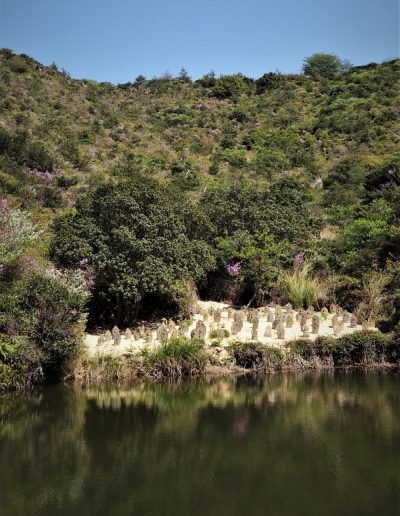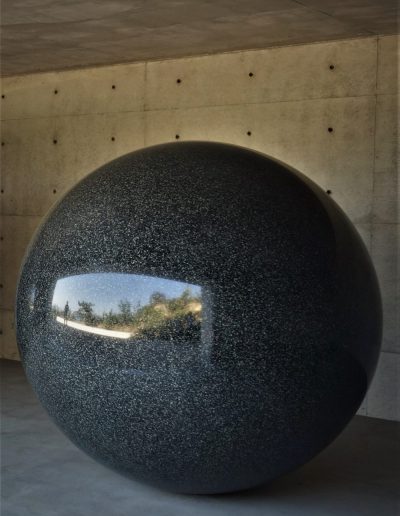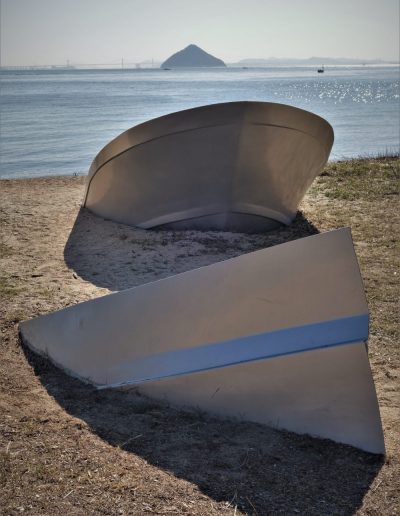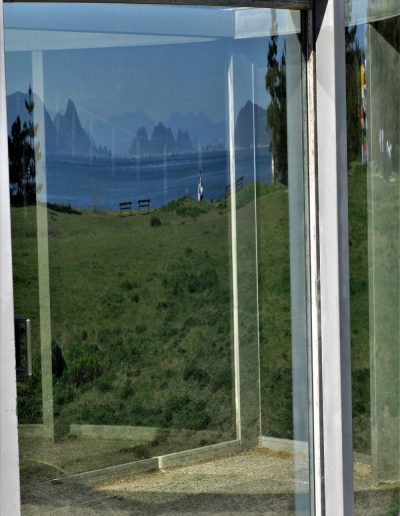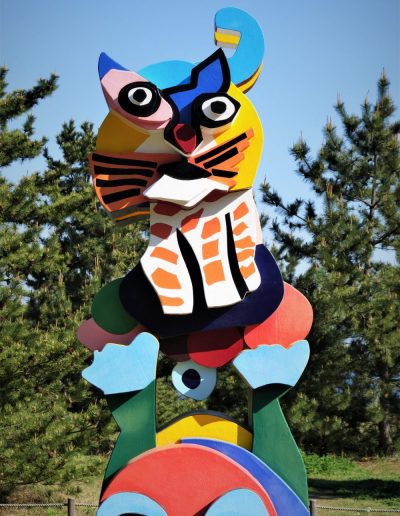- One day we visited the ‘art island’ of Naoshima. Up to the 1980s this was a fishing community struggling with declining catches from the Seto Inland Sea. Around 1990 the Benesse Corporation which is in the language schools business decided to build a series of museums on Naoshima to house its growing collection of modern art. It chose the star architect Tadao Ando to design the major buildings. Naoshima is now a world renowned art travel destination.
- We caught the train from Okayama to the port town of Uno then hopped on a ferry to Miyanoura on Naoshima. Yayoi Kusama is one of the artists featured on the island and her red pumpkin greeted us (then her yellow pumpkin farewelled us – see below).
- We walked from Miyanoura to the extraordinary Chichu Museum. It only has three artists featured. Claude Monet, Walter de Maria, and James Turrell. Tadao Ando’s building is simply stunning.
- We walked on to the Lee Ufan Museum, housing paintings and sculptures by the South Korean artist Lee Ufan in another sensational Tadao Ando building. ‘Sublime’ is overused as an adjective, but I can think of no better word to describe Ufan’s minimalist brushstroke paintings.
- We walked on to the Benesse House Museum, admiring Tsuyoshi Ozawa’s ‘Slag Buddha 88’ installation and checking out the beach and views across to Shikoku along the way. The Benesse Museum has a diverse collection. We particularly liked the works by David Hockney, Yukinori Yanagi, and Richard Long. And Tadao Ando’s building.
- Below the museum a number of amazing outdoor works dot the coastline. ‘Seen / Unseen, Known / Unknown’ by Walter de Maria, Shinro Ohtake’s ‘Shipyard Works’ sculptures, Dan Graham’s ‘Cylinder dissected by plane’, Karel Appel’s ‘Frog and Cat’, and Yayoi Kusama’s now iconic yellow pumpkin to name a few.
- We were out of time at this point so caught the bus back to Miyanoura to pick up a ferry and head back to Okayama. We had a fantastic day on Naoshima and would liked to have stayed for longer. We hope to go back again and if we get the chance we’ll spend a night or two on the island.
- Footnote – As Tasmanians, Naoshima had a lot of resonance for us. It clearly influenced David Walsh in building his Museum of Old and New Art (MONA) in Hobart, which opened in 2011. It was interesting to feel such a stong connection through the common languages of art and architecture.
